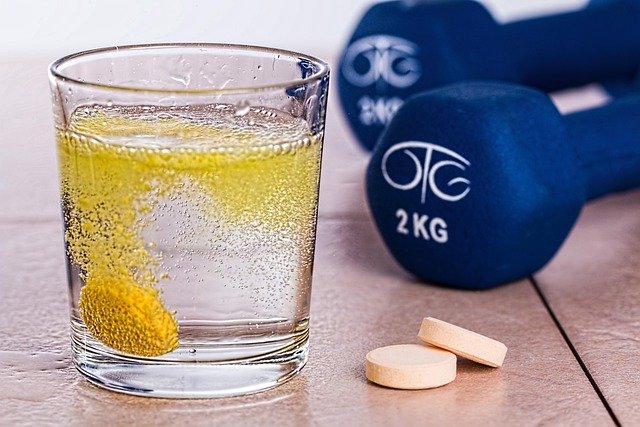Small movement routines that support metabolic resilience
Small movement routines—brief, frequent activities integrated into daily life—can support metabolic resilience by influencing glucose handling, energy balance, and recovery. Simple shifts in timing, hydration, and nutrition around short movement breaks can compound across the day to improve markers like steady energy, better sleep, and more stable glucose responses.

Small, frequent movement is an accessible strategy to support metabolic resilience without needing long workouts. Brief activity bouts placed throughout the day alter how muscles use glucose and fatty acids, help maintain steady energy, and can complement sleep, nutrition, and hydration strategies. This article examines practical routines, timing considerations, and how stress and recovery interact with basic biomarkers so you can design sustainable daily habits.
How does movement influence metabolism?
Even short periods of low- to moderate-intensity movement—standing, light walking, stair climbs, or bodyweight mini-sets—change muscular demand and increase energy turnover. These micro-sessions stimulate glucose uptake by muscle independently of insulin, which can help smooth post-meal glucose excursions and maintain metabolic flexibility. Over time, repeatedly recruiting skeletal muscle through small movement can support basal metabolic processes without requiring long exercise sessions, making it easier to integrate activity into busy schedules and sustain consistent energy use across the day.
What routines boost daily energy and routine adherence?
Design routines that fit existing patterns: a 3–5 minute walk after meals, standing or calf raises during phone calls, or a brief mobility flow in the morning. These small actions reduce prolonged sedentary time, which is linked to energy dips. Consistency matters more than intensity for adherence: aligning movement with regular events (after a coffee, during ad breaks, or at designated “movement alarms”) builds a predictable routine that supports daily energy regulation and reduces friction for long-term behavior change.
How does timing and glucose regulation matter?
Timing movement relative to meals affects glucose and insulin dynamics. Light activity shortly after eating can blunt peak glucose by increasing muscle glucose uptake. Short, post-meal walks of 5–15 minutes are an evidence-informed approach to moderate postprandial glucose responses without intense exertion. Spacing movement across the day—rather than concentrating all activity in one session—can help maintain more stable glucose and energy levels, particularly in people who experience midday slumps or irregular blood sugar patterns.
How do sleep and recovery support resilience?
Quality sleep interacts with metabolic control, influencing appetite hormones, insulin sensitivity, and recovery capacity. Small daytime movement routines should be balanced with adequate recovery: avoid scheduling vigorous activity too close to bedtime if it disrupts sleep. Gentle evening mobility or restorative stretching can aid relaxation and recovery without stimulating the nervous system. Prioritizing consistent sleep timing and duration complements daytime movement, helping consolidate gains in energy regulation and metabolic resilience.
What role do nutrition and hydration play?
Nutrition and hydration affect how the body responds to small movement bouts. Adequate fluid intake supports circulation and performance even during brief activity. Meal composition and timing influence glucose availability; pairing post-meal movement with balanced meals that include protein, fiber, and healthy fats can moderate glucose spikes. Small snacks or strategic timing of carbohydrate intake around activity may be useful for people who need to manage energy for work or exercise, but overall patterns of consistent nutrition and hydration are key to supporting recovery and sustained metabolic function.
How can stress and biomarkers guide practice?
Psychological and physiological stress influence metabolic responses through hormones like cortisol, which can alter glucose regulation and energy balance. Simple monitoring—how you feel after activity, sleep quality, and steady daytime energy—can guide adjustments. For those tracking biomarkers more formally, common measures include fasting glucose, HbA1c, resting heart rate variability, and subjective recovery scores. Small movement routines can be tailored based on these signals: if stress or poor sleep is present, prioritize low-intensity movement and active recovery rather than pushing intensity, and consult a clinician for interpreting biomarker results.
This article is for informational purposes only and should not be considered medical advice. Please consult a qualified healthcare professional for personalized guidance and treatment.
Conclusion
Integrating brief, intentional movement into daily life can support metabolic resilience by improving glucose handling, sustaining energy, and complementing sleep, nutrition, and hydration habits. Focus on consistent, context-friendly routines—short walks after meals, movement during sedentary stretches, and gentle recovery when stressed—to produce cumulative benefits. Observing how your energy, sleep, and simple biomarkers respond over weeks will help refine practices that fit your lifestyle and support metabolic stability.





